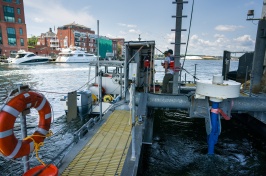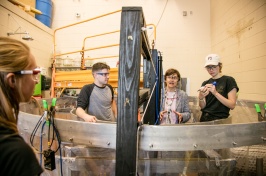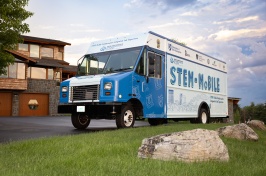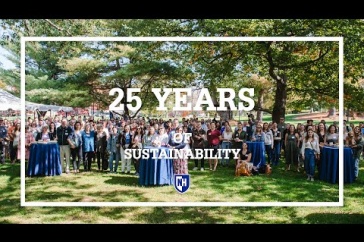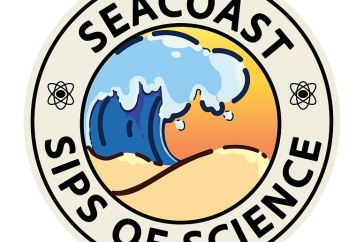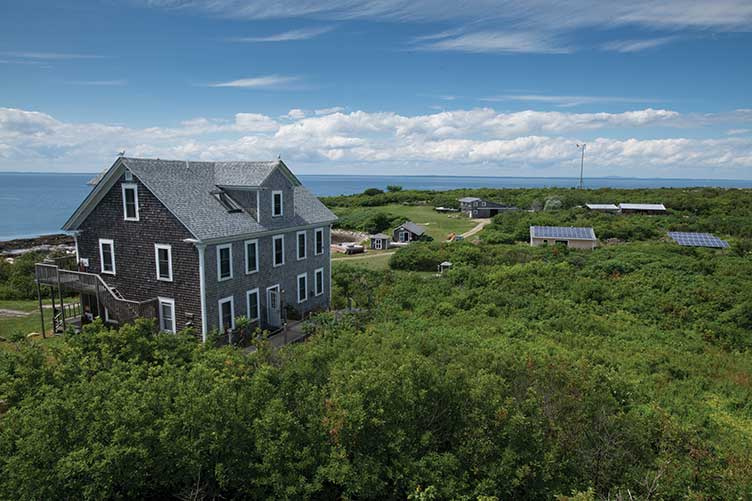
Photo: Jeremy Gasowski
What better way to celebrate a decade of sustainability than with a gift of new solar panels? This summer, the Shoals Marine Laboratory (SML) at Appledore Island added 94 solar panels to its existing green energy grid, providing clean energy for the UNH/Cornell marine science facility’s classrooms, laboratories and residence halls. Historically, a diesel generator powered the island’s electrical grid, burning some 10,000 gallons of diesel fuel. The new panels, in combination with the island’s 2014 solar-voltaic array and wind turbine, energy efficient lights and appliances and a composting toilet system installed in 2005, have scaled the Shoals lab’s diesel fuel needs back to 1,500 gallons — a decrease of almost 80 percent.

The 95-acre seasonal field station, which plays host to students and faculty members from across the United States and around the world every summer, has electrical demands similar to a community of 10-12 houses — a model SML’s lead engineer Alex Brickett says many in the green power world consider ideal for setting up solar and wind systems.
“We are showing the path forward,” Brickett says. “What we have been able to achieve with this system in terms of fuel savings and energy efficiency has been truly remarkable.” With the addition of the new panels, the island’s solar energy capacity is 56 kilowatts.
This summer also marked 10 years of the SML’s highly successful sustainable engineering internship, which brings undergraduate students to Appledore to study the island’s infrastructure and explore improvements in the lab’s facilities and research usage. Fittingly, two of the three Shoalers behind the idea for the internship and the green grid, Tom Johnson and Mike Dalton ’64, were on hand when 30 people descended on Appledore on August 20 to celebrate the milestone.
“When we started the sustainable engineering internship…we had a vision but no idea where it would lead,” Johnson says. “Now, 10 years later, we can look at the island-wide improvements and realize the significant benefits to the long-term success of SML.”
Originally published in UNH Magazine—Fall 2015 Issue
-
Written By:
Kristin Waterfield Duisberg | Communications and Public Affairs








































